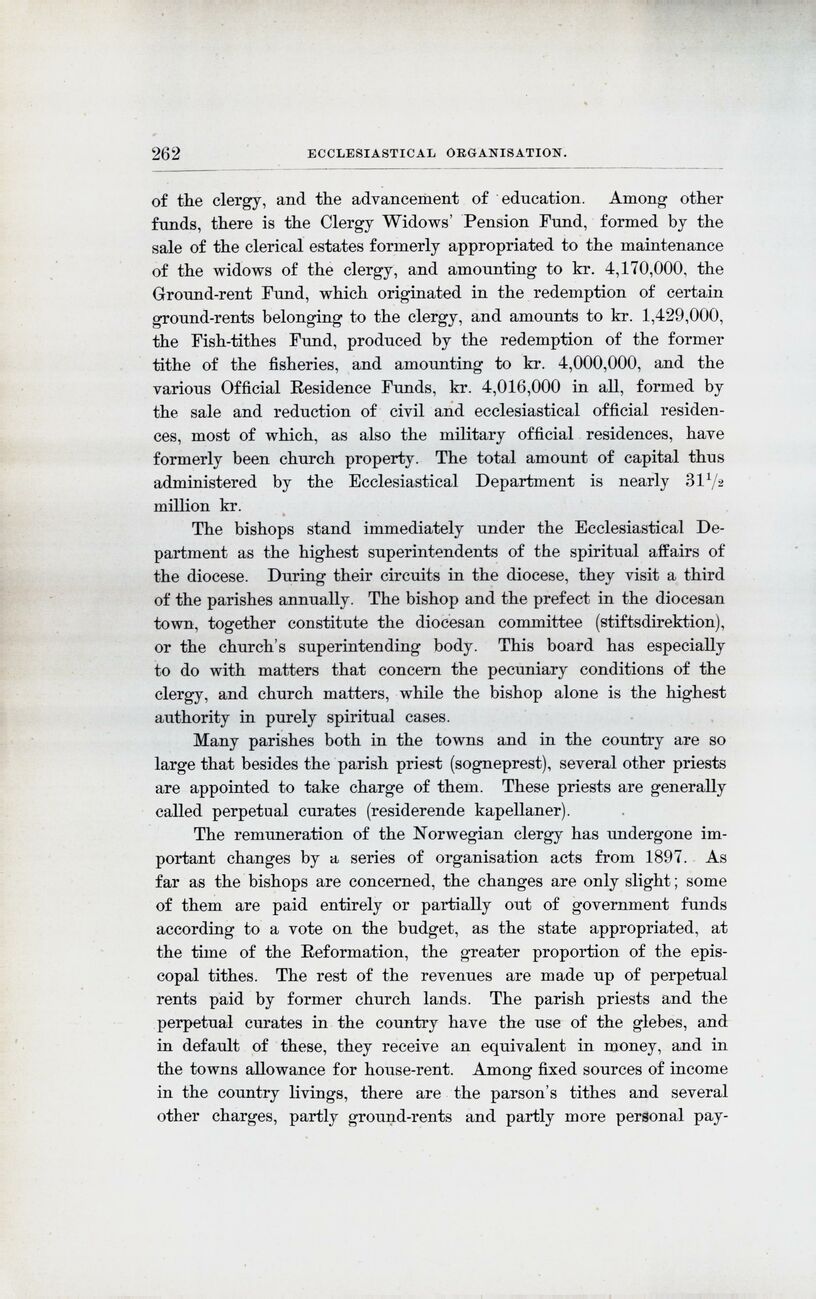
Full resolution (JPEG) - On this page / på denna sida - Ecclesiastical Organisation, by E. I. Hambro

<< prev. page << föreg. sida << >> nästa sida >> next page >>
Below is the raw OCR text
from the above scanned image.
Do you see an error? Proofread the page now!
Här nedan syns maskintolkade texten från faksimilbilden ovan.
Ser du något fel? Korrekturläs sidan nu!
This page has been proofread at least once.
(diff)
(history)
Denna sida har korrekturlästs minst en gång.
(skillnad)
(historik)
of the clergy, and the advancement of education, Among other
funds, there is the Clergy Widows’ Pension Fund, formed by the
sale of the clerical estates formerly appropriated to the maintenance
of the widows of the clergy, and amounting to kr. 4,170,000, the
Ground-rent Fund, which originated in the redemption of certain
ground-rents belonging to the clergy, and amounts to kr. 1,429,000,
the Fish-tithes Fund, produced by the redemption of the former
tithe of the fisheries, and amounting to kr. 4,000,000, and the
various Official Residence Funds, kr. 4,016,000 in all, formed by
the sale and reduction of civil and ecclesiastical official
residences, most of which, as also the military official residences, have
formerly been church property. The total amount of capital thus
administered by the Ecclesiastical Department is nearly 31 ½
million kr.
The bishops stand immediately under the Ecclesiastical
Department as the highest superintendents of the spiritual affairs of
the diocese. During their circuits in the diocese, they visit a third
of the parishes annually. The bishop and the prefect in the diocesan
town, together constitute the diocesan committee (stiftsdirektion),
or the church’s superintending body. This board has especially
to do with matters that concern the pecuniary conditions of the
clergy, and church matters, while the bishop alone is the highest
authority in purely spiritual cases.
Many parishes both in the towns and in the country are so
large that besides the parish priest (sogneprest), several other priests
are appointed to take charge of them. These priests are generally
called perpetual curates (residerende kapellaner).
The remuneration of the Norwegian clergy has undergone
important changes by a series of organisation acts from 1897. As
far as the bishops are concerned, the changes are only slight; some
of them are paid entirely or partially out of government funds
according to a vote on the budget, as the state appropriated, at
the time of the Reformation, the greater proportion of the
episcopal tithes. The rest of the revenues are made up of perpetual
rents paid by former church lands. The parish priests and the
perpetual curates in the country have the use of the glebes, and
in default of these, they receive an equivalent in money, and in
the towns allowance for house-rent. Among fixed sources of income
in the country livings, there are the parson’s tithes and several
other charges, partly ground-rents and partly more personal
<< prev. page << föreg. sida << >> nästa sida >> next page >>